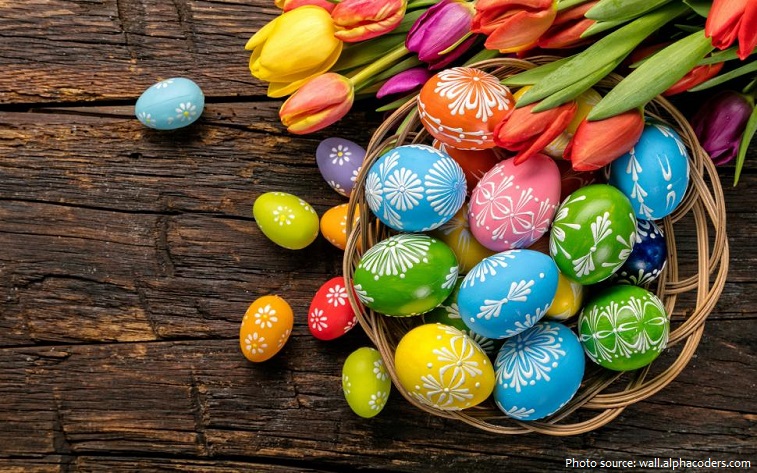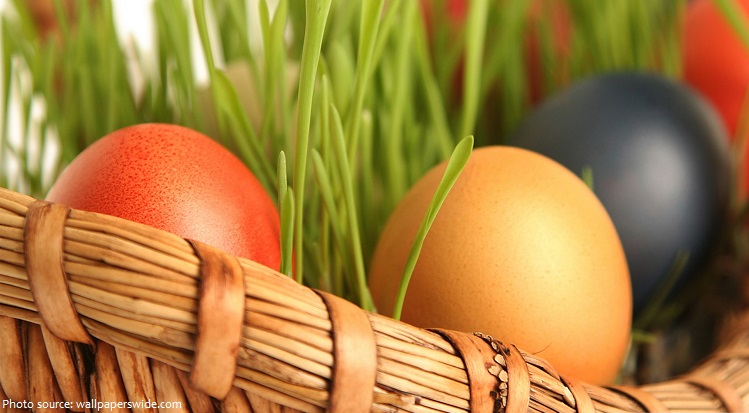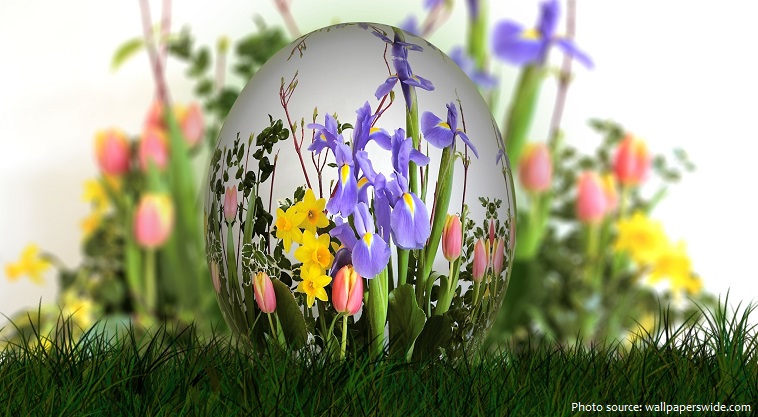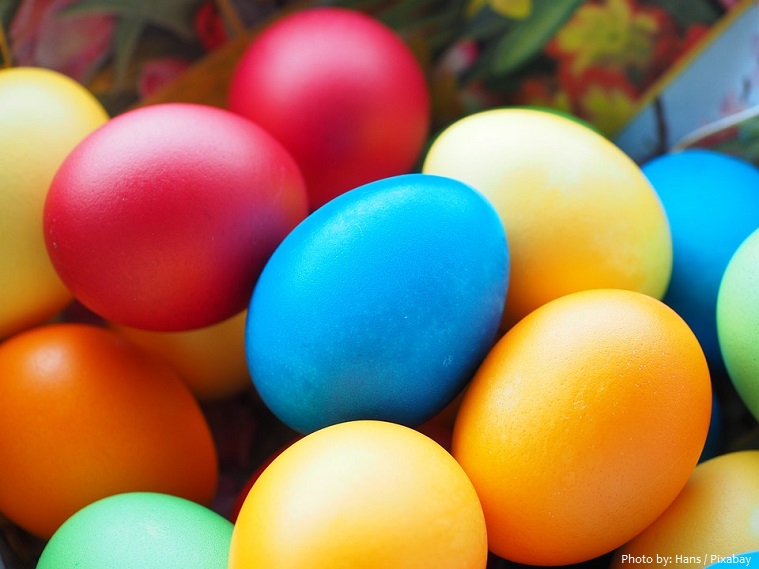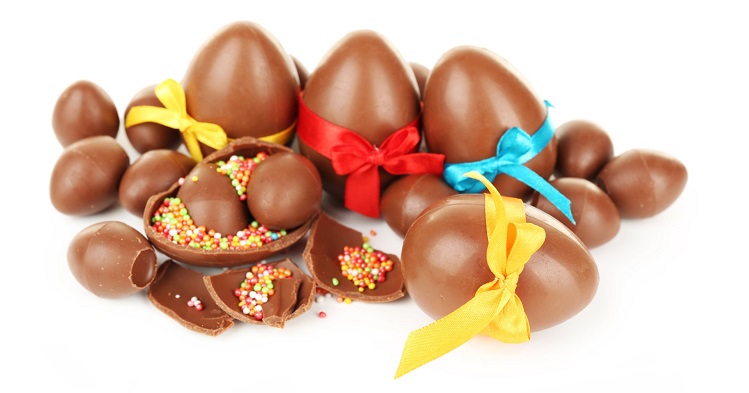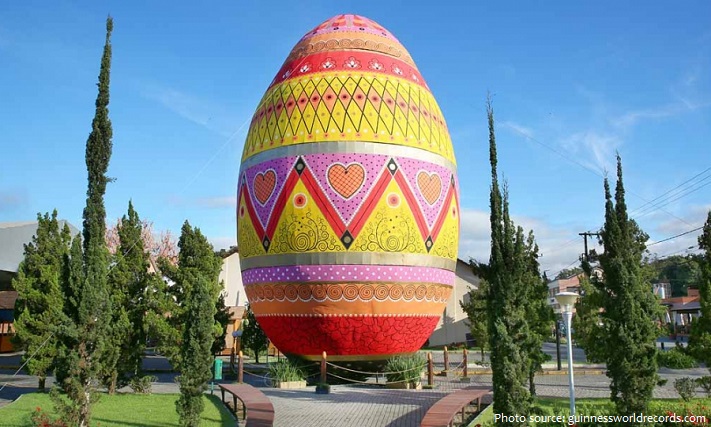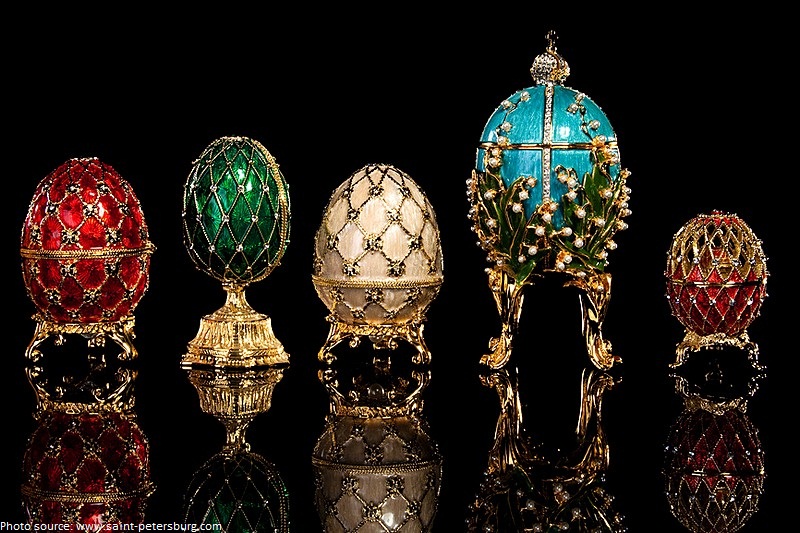Easter eggs, also called Paschal eggs, are eggs that are sometimes decorated.
The use of painted and decorated Easter eggs was first recorded in the 13th century.
The church prohibited the eating of eggs during Holy Week, but chickens continued to lay eggs during that week, and the notion of specially identifying those as “Holy Week” eggs brought about their decoration.
The egg itself became a symbol of the Resurrection. Just as Jesus rose from the tomb, the egg symbolizes new life emerging from the eggshell.
In the Orthodox tradition some Easter eggs are colored in red “in memory of the blood of Christ, shed as at that time of his crucifixion.”
In Western Christianity, Easter eggs are common during the season of Eastertide (Easter season).
The dyeing of Easter eggs in different colors is commonplace, with color being achieved through boiling the egg in natural substances (such as, onion peel (brown to red color), oak or alder bark or walnut nutshell (black), beet juice (pink) etc.), or using artificial colorings.
A pysanka is a Ukrainian Easter egg, decorated with traditional Ukrainian folk designs using a wax-resist method. The word pysanka comes from the verb pysaty, “to write” or “to in scribe”, as the designs are not painted on, but written (inscribed) with beeswax.
Egg tapping, or also known as egg fight or egg knocking is a traditional Easter game. The rule of the game is simple. One holds a hard-boiled egg and taps the egg of another participant with one’s own egg intending to break the other’s, without breaking one’s own. As with any other game, it has been a subject of cheating; eggs with cement, alabaster and even marble cores have been reported.
Egg rolling is also a traditional Easter egg game played with eggs at Easter. In the United Kingdom, Germany, and other countries children traditionally rolled eggs down hillsides at Easter.
An egg hunt is a game in which decorated eggs, which may be hard-boiled chicken eggs, chocolate eggs, or artificial eggs containing candies, are hidden for children to find. The eggs often vary in size, and may be hidden both indoors and outdoors. When the hunt is over, prizes may be given for the largest number of eggs collected, or for the largest or the smallest egg.
The Easter rabbit is said to lay the eggs as well as decorate and hide them. In some European countries, however, other animals — in Switzerland the cuckoo, in Westphalia the fox — brought the Easter eggs.
In 1873, J.S. Fry & Sons of England introduced the first chocolate Easter egg in Britain.
Easter eggs are frequently depicted in sculpture, including a 8-meter (27 ft) sculpture of a pysanka standing in Vegreville, Alberta.
The largest decorated Easter egg is 15.02 m (49 ft 3 in) tall and 8.72 m (28 ft 7 in) in diameter, and was created by Associação Visite Pomerode (Brazil) in Pomerode, Santa Catarina, Brazil, on 9 March 2019.
The tallest chocolate Easter egg measured 10.39 m (34 ft 1.05 in) and had a circumference of 19.6 m (64 ft 3.65 in) at its widest point and was made by Tosca (Italy).
The largest Easter egg hunt consisted of 501,000 eggs that were searched for by 9,753 children accompanied by their parents at the Cypress Gardens Adventure Park in Winter Haven, Florida, USA, on 1 April 2007.
A Fabergé egg is one of a limited number of jeweled eggs created by Peter Carl Fabergé and his company between 1885 and 1917. After being commissioned to create an Easter egg for the royal family of Russia in 1885, the Imperials liked the result so much that further eggs were commissioned each year. Fabergé produced one egg per year for Tsar Alexander and then two per year after Nicholas II was crowned. Each egg took a year or more to make, involving a team of highly skilled craftsmen, who worked in the greatest secrecy. Fabergé was given complete freedom in the design and execution, with the only prerequisite being that there had to be surprise within each creation.
The tradition of painting hard-boiled eggs during springtime pre-dates Christianity.
This custom of the Easter egg can be traced to early Christians of Mesopotamia, and from there it spread into Russia and Siberia through the Orthodox Churches, and later into Europe through the Catholic and Protestant Churches.
This Christian use of eggs may have been influenced by practices in “pre-dynastic period in Egypt, as well as amid the early cultures of Mesopotamia and Crete.”
The practice of decorating eggshells is quite ancient, with decorated, engraved ostrich eggs found in Africa which are 60,000 years old.
